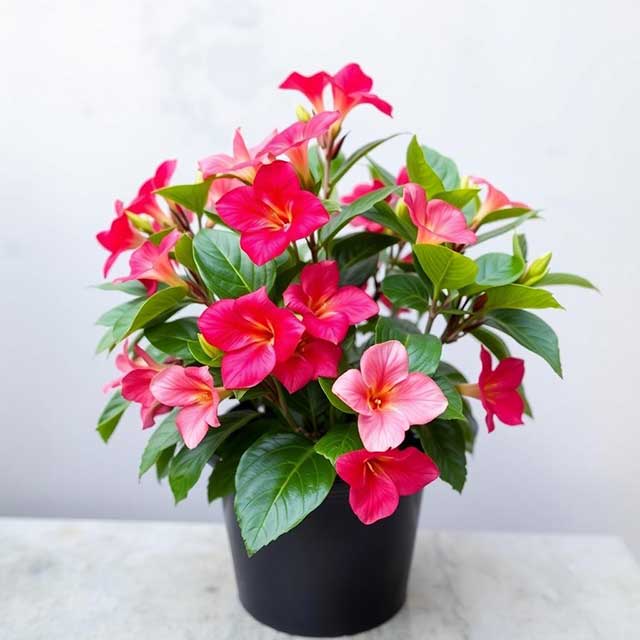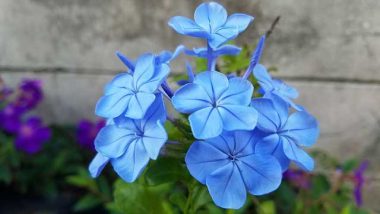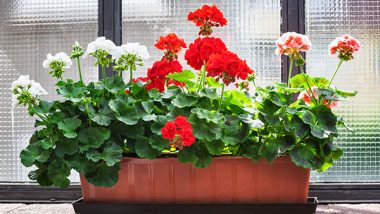Last updated on December 9th, 2024 at 06:53 am
Growing Mandevilla Plants. These plants are native to Mexico, South and Central America, and the American Southwest. They are known for their bright-colored flowers from deep dark red to light pink and there are also white and yellow flowers, but they are hard to find at local Nurseries.
In places where it freezes during the winter months, it will not survive the winter season if planted in the ground. However, they will do well in containers or hanging baskets. When the weather starts to turn cold or just before the first freeze trim it back and place it indoors in a brightly lit area. You will be amazed at the blooms during the winter months.
Water and Fertilizing the Mandevilla Plant
Water about every 2-3 days during the spring and fall seasons. It is essential that you water daily if this plant is in full sun during the summer seasons. For the best results fertilize once per month using a good 20-20-20 all Purpose fertilizer. What is Fertilizer?
The Mandevilla Plant
Where to Place the Mandevilla Plant
It can tolerate the hot Southwest sun if it gets plenty of water during the sweltering summer season. If you want the Mandevilla plant to bloom all summer long, I suggest placing it in the morning sun and afternoon shade or underneath a large shade tree with filtered light shining through. It is amazing how well this plant does all summer long. I keep thinking it will shrivel up and die during the summertime heat. But it keeps on thriving and blooming.
There are two types of Mandevillas the shrub type and the Viney plant. The Vine is perfect for those wanting a small colorful vine indoors. Use small indoor steel or wooden trellis. They like temperatures somewhere between 60 degrees and 95 degrees Fahrenheit. Do not be afraid to trim off the Viney stems if they get too long for your liking. Matter of fact they doing so will help generate new growth and flowers.
Mandevilla Plants Do Well in Pots


Problems with Mandevilla Plants
These plants are pretty much minimal maintenance, but they can develop a blight commonly called gray mold. Usually caused by too much moisture or consistent overhead watering. Fusarium rot is another fungus that will cause problems.
Spraying with Neem oil is a good way to remove these fungal problems. Other chemicals to use are propiconazole, and myclobutanil, but Neem oil is an organic substitute, and it is better for the environment.

Greenhouse Manager, Master Gardener, and Webmaster.
If you have any questions or enjoyed this post, feel free to share your thoughts in the comments below.






